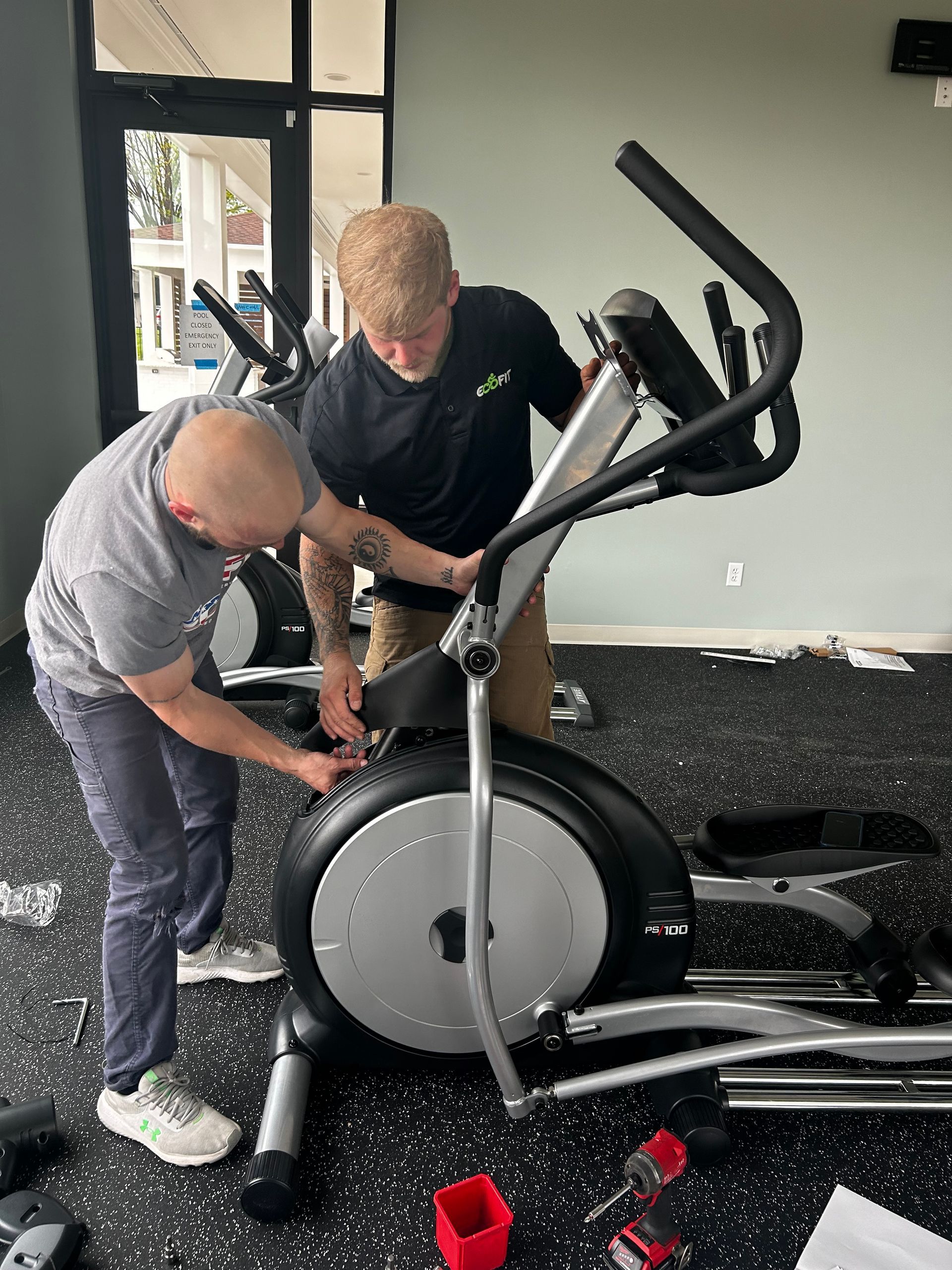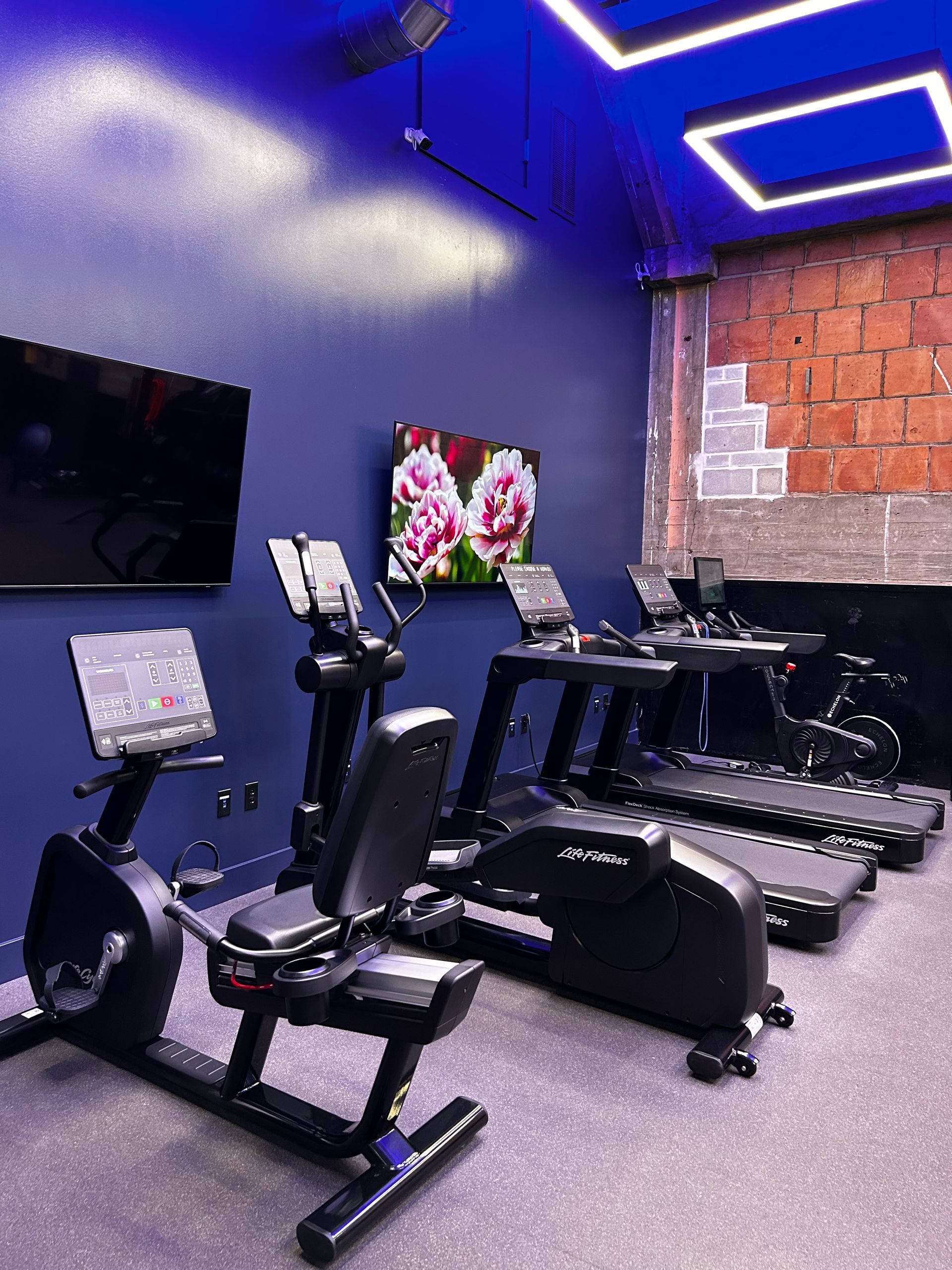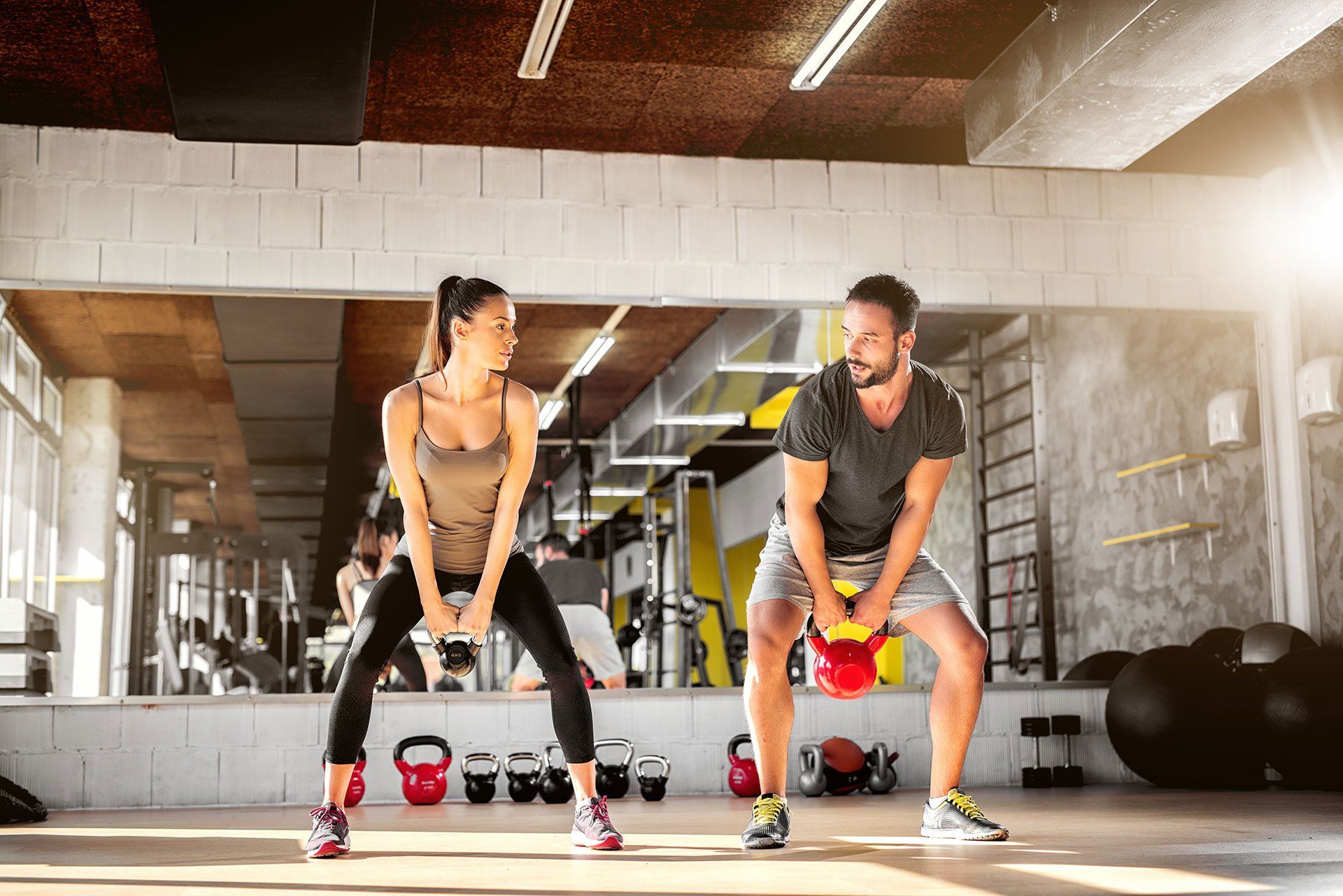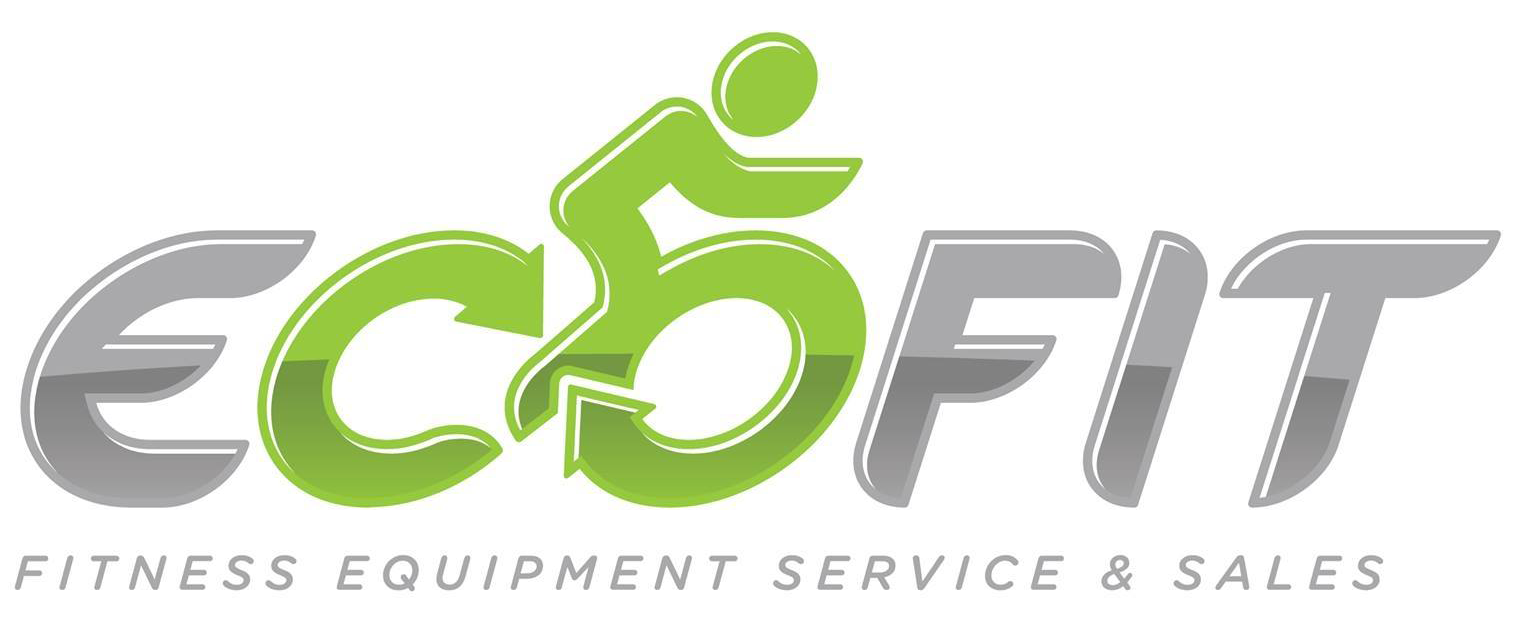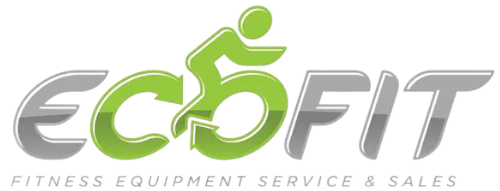Outfitting a Fitness Center in a Multi-Family Complex: What You Need to Know
If you manage or develop a multi-family property in the St. Louis area, a well-designed fitness center is no longer a bonus. It is expected. Renters are looking for more than just a treadmill in the corner of a rec room. They want a gym that is functional, inviting, and easy to use. Whether you are renovating an older space or building a new one, the choices you make in outfitting your fitness center can directly impact resident satisfaction and retention.
At EcoFit Equipment, we work with apartment complexes, condos, and mixed-use buildings throughout St. Louis to design, equip, and maintain fitness centers that meet the needs of today’s residents. Here is what we recommend you keep in mind when building out your space.
Start With the Basics and Build From There
You do not need a massive gym to make an impact. Most apartment or condo fitness centers range between a few hundred and a few thousand square feet. That is more than enough to create a practical, user-friendly setup if you focus on the right equipment.
We recommend starting with a balance of cardio, strength, and functional training options. This covers the needs of most residents, from those just beginning their fitness journey to those who train consistently.
A typical setup for a mid-size St. Louis apartment might include:
- Two treadmills
- One elliptical or cross trainer
- One recumbent or upright bike
- A cable machine or functional trainer
- A bench and dumbbells up to fifty pounds
- A small open area with mats or light equipment for stretching
This mix ensures a range of workout styles while keeping things compact and organized.
Choose Equipment That Can Withstand Constant Use
Apartment gym equipment often gets used by a wide variety of people with different experience levels and routines. You need commercial-grade machines built to handle daily wear and tear. Residential or light-duty equipment will not hold up over time and can lead to more frequent repairs.
We help multi-family properties in St. Louis choose durable, low-maintenance machines that perform well in shared spaces. We also offer refurbished commercial options for properties with tighter budgets.
Consider the Demographics of Your Residents
Not every apartment complex has the same tenant profile. Some are younger communities with more active residents. Others cater to seniors or families. Knowing who lives in your building can help guide the type of equipment you install.
For example:
- A younger audience might appreciate space for functional fitness or high-intensity workouts
- Senior-friendly buildings may need lower step heights and recumbent machines with easier access
- Family-focused properties could benefit from multi-use equipment that allows for quick, simple workouts
We help property managers throughout the St. Louis region match their fitness center setup to the lifestyle of their residents.
Plan the Layout With Movement and Safety in Mind
Cramped gyms lead to bad experiences. You want residents to feel comfortable moving through the space without bumping into equipment or feeling confined. We always recommend designing with clear traffic flow in mind, giving residents room to adjust machines, use mirrors, and stretch safely.
Make sure machines are spaced out enough for proper function. Avoid placing cardio machines too close to walls or strength equipment in areas where people need extra range of motion.
In smaller spaces, mirrors and natural light can help make the room feel bigger. Flooring matters too. Rubber flooring in strength areas and cardio zones provides traction and protects your subfloor. Adding a small turf area can elevate the space and make it more versatile.
Offer Easy-to-Use Machines With Minimal Setup
In multi-family gyms, users range from beginners to intermediate. Most do not want to spend time figuring out how to operate complicated machines. Look for equipment that is intuitive and user-friendly.
Machines with clear instructions, simple weight pin systems, and minimal adjustments perform best in apartment settings. For cardio, machines with start buttons, quick select options, and built-in programs are more likely to get used regularly.
We help you choose machines with consistent ease of use and offer guidance on placement so residents always know how to get started.
Don’t Forget the Aesthetic Appeal
How your fitness center looks matters. It is part of the first impression when people tour your property. A clean, organized, and modern-looking gym makes your complex feel more professional and well-maintained.
Even small changes like updated equipment finishes, coordinated color palettes, and mounted TVs can elevate the space. For properties in competitive St. Louis neighborhoods, appearance plays a major role in whether someone chooses your building over another.
Our team can help you match your fitness center’s design with your building’s branding to create a cohesive experience across your amenities.
Make Maintenance a Priority
No one wants to walk into their building’s gym and see an out-of-order sign. Equipment issues are one of the fastest ways to turn residents off from using the fitness center altogether. When machines stay broken, they stop being an amenity and become a liability.
We offer preventative maintenance plans that keep your machines running smoothly, reduce long-term repair costs, and ensure residents have consistent access to working equipment. These services are especially helpful for properties without on-site staff or full-time maintenance teams.
Our St. Louis-based team can stop by for regular service, handle any repairs, and keep your fitness room functioning at its best year-round.
Consider Refurbished Equipment for Budget Flexibility
Not every apartment complex has the budget for all new machines. Refurbished commercial equipment can give you the same durability and performance as new, but at a much more accessible price point.
EcoFit Equipment offers fully refurbished treadmills, ellipticals, bikes, and strength equipment that look and operate like new. This allows you to stretch your budget, build out a complete gym, or allocate funds to other amenities.
Many of our St. Louis clients use refurbished equipment as a way to expand their fitness center offerings without going over budget. It is a practical solution that delivers long-term value.
Partner With a Local Team That Understands Multi-Family Needs
Designing and maintaining a fitness center in a multi-family complex is different from managing a commercial gym. You need solutions that work for shared spaces, diverse users, and long-term durability.
EcoFit Equipment has helped apartment managers and developers across the St. Louis area create fitness centers that perform well, look great, and hold up over time. We bring experience, commercial-grade equipment, and flexible options for properties of all sizes.
We offer:
- Design consultations to plan your layout
- New and refurbished commercial equipment
- Delivery and installation
- Preventative maintenance and repair services
Whether you are outfitting a brand-new facility or revamping an outdated gym, we can guide you through every step of the process.
Let’s Upgrade Your Apartment Fitness Center
Your gym is one of your most important amenities. Make sure it reflects the quality of your property. If you are ready to build or upgrade your multi-family fitness center in the St. Louis area, reach out to EcoFit Equipment.
We will help you make smart choices, install the right equipment, and keep everything running smoothly long after move-in day.
Contact Us
